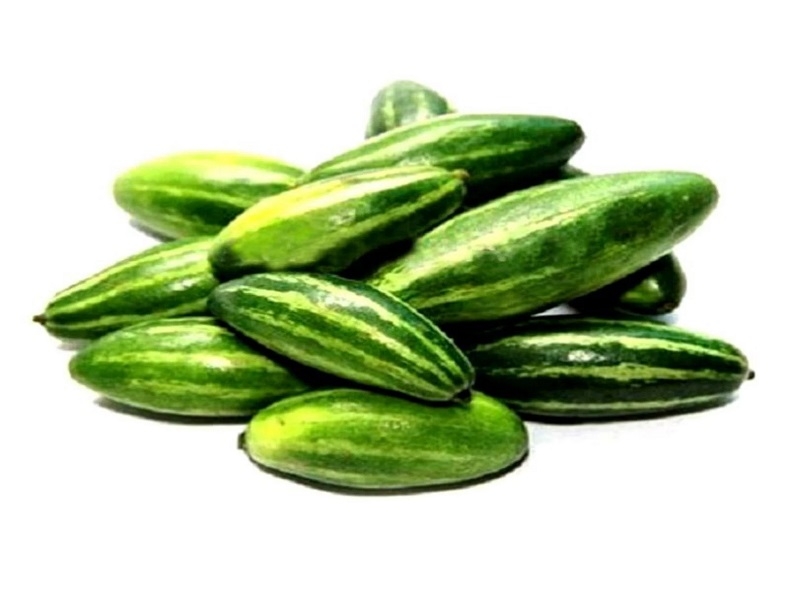Padval: A natural anti-diabetic
| Date :30-Sep-2019 |

By Rajendra Diwe :
The whole plant including roots, leaves, fruits, and seeds is reported to show medicinal properties
There is a tradition to celebrate three day Mahalaxmi festival in Vidarbha after third day of installation of Lord Ganesh Idol. Mahalaxmi festival is a part of Ganesh festival in Vidarbha and it is known as Gauri festival in Western Maharashtra. The vegetable which resembles like snake is very important in Mahalaxmi festival in Vidarbha region. During the Mahalaxmi festival, even the small piece of this snake like vegetable is very costly. A six-inch-long piece costs around Rs 150 to 300 during the festival. This long fruit is termed as Padval in Maharashtra. Botanically it is a fruit of an annual climber Trichosanthes cucumerina found in Asian countries including India, Sri Lanka, Malaysia, Penincula and Philippines. The plant is commonly called snake gourd, viper gourd, snake tomato, or long tomato in many countries. The fruit is usually consumed as a vegetable due to its high nutritional value. The whole fruit is eaten as a vegetable when young and can be dried and used as soap.
The leaves and shoots are also edible, and the pulp of mature fruits is sometimes eaten as a tomato substitute. The plant is a rich source of functional constituents other than its basic nutrients such as flavonoids, carotenoids, phenolic acids, and soluble and insoluble dietary fibers and essential minerals, which makes the plant pharmacologically and therapeutically active. The plant contains proteins, fat, fiber, carbohydrates, minerals, and vitamins A and E in high levels. The predominant mineral elements are potassium and phosphorus and also sodium, magnesium, and zinc are found in fairly high amounts. This plant is identified by eight names in Hindi speaking states.
These names include: caccinda, jangli chachinda, jangli chichonda, jangli-chi-chonda, janglichachinda, janglichichonda, kadwa paraval, and ramble. There are 43 names to this plant in Sanskrit. Some of them are, amritaphala, bijagarbha, cicindah, jvaranashana, jyotsna, kachhughni, kachhura, kadupatola, karkasacchadah, karkashachhada, karkashadala, kasabhanjanpatola, kasamaradana, katuka etc. In Tamil there are 88 names of this plant are available. Some of them include: alakaipputal, alakaipputol, cikkacca, cikkaram, icimalakkoti, ituputal, karapputal, mirutapali, mituputalai, nattumatarai, nattuppeypputal, pai-pudal, patailokam, pudal, pudel, tittacam, utkaru, ututtiyankai, vatanali etc. In Kannada it has 17 different names like adla balli, adla kaayi, bettada padavala, bettada-padavala, hadla kaayi, kaadaadlu balli, kahai padavala, kahi padaval, kiri padavala, sanna padava etc.
In Malayalam the plant has ten names like kaippam-patolam, kaippampatolam, kaippanpatavalam, kattupatavalam etc. In Telugu the plant has 22 names. Some of them are, adavi-potla, chaynd-potla, chayndpolla, chedu-potla, chethipotala, cheti-potla, gingaaptal, lingapotla, patolamu, pitchuka potla etc. In Marathi this plant as 14 names some of them are jangli padavala, kaadu padavala, padaaval, padual, pauli, perula, ranachapadavali etc. The whole plant including roots, leaves, fruits, and seeds is reported to show medicinal properties such as antidiabetic, antibacterial, anti-inflammatory, anthelmintic, antifebrile, gastroprotective, and antioxidant activity. It improves the appetite and acts as a tonic and stomachic and cures biliousness.
It is used in the treatment of head ache, alopecia, fever, abdominal tumors, bilious, boils, acute colic, diarrohea, haematuria and skin allergy. The fruits of cultivated forms also have medicinal uses and are useful for people suffering from blood pressure, heart diseases, rheumatism and psoriasis. The plant is richly constituted with a series of chemical constituents like flavonoids, carotenoids, phenolic acids which makes the plant pharmacologically and therapeutically active.







